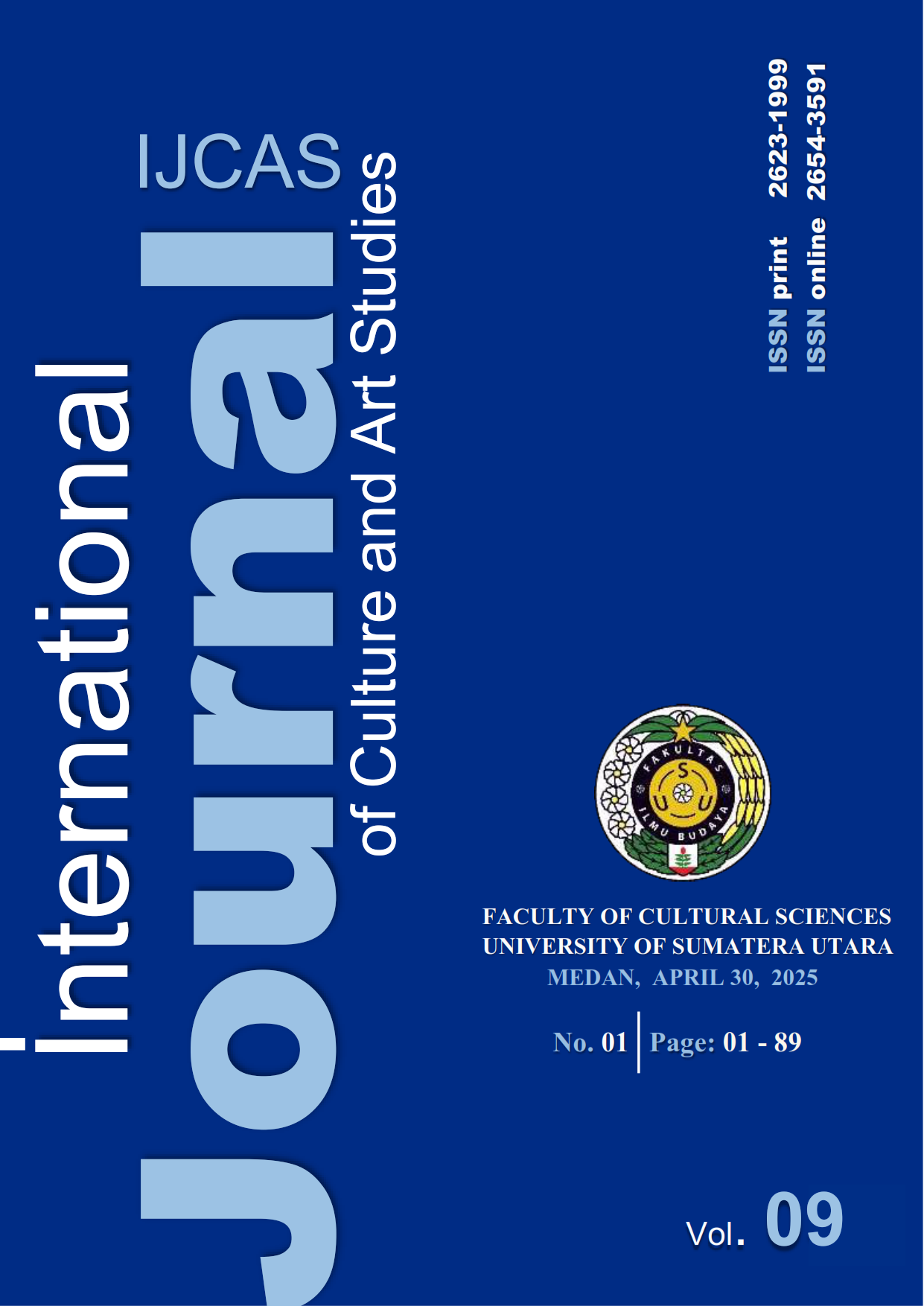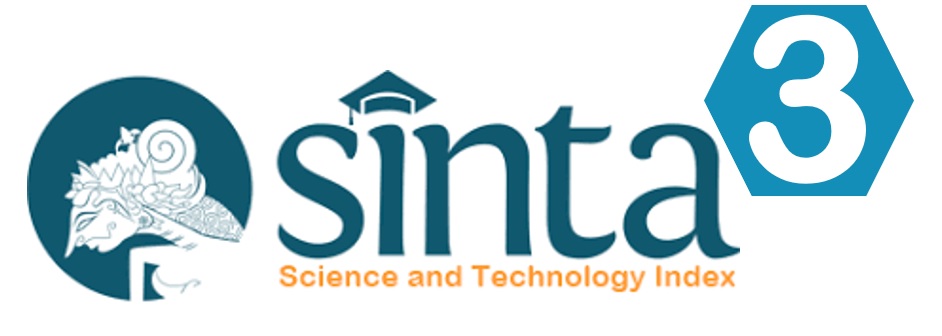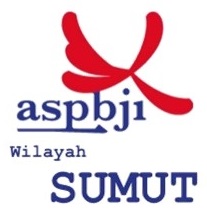Gondang Mandudu: The Ritual of Rejecting Disasters During the COVID-19 Pandemic in Samosir Regency
DOI:
https://doi.org/10.32734/ijcas.v9i1.18096Keywords:
Gondang Mandudu, COVID-19, Batak Toba, Rejecting DisastersAbstract
This study explores the Gondang Mandudu ceremony, a sacred ancestral ritual in the Batak Toba community, specifically practiced to ward off the threat of COVID-19. Conducted by the Ruma Parsaktian Ompung Raja Isumbaon Community, this ceremony features the unique phenomenon of playing gondang sabangunan for approximately one hour, which is believed to invoke spiritual protection. This research aims to provide a descriptive account of the ceremony and understand its objectives in the context of the COVID-19 pandemic. Primary data was gathered through direct field research using a qualitative descriptive method, and secondary data from academic books and articles was added to the primary data. This triangulation-validated data ensured that the secondary sources and field observations were consistent. The findings highlight the significance of the ritual in the cultural and spiritual context of the community, showcasing its role in invoking protection from misfortune. This study contributes to the understanding of indigenous responses to global health challenges. It offers insights into the cultural significance of traditional rituals in modern times.
Downloads
References
Al-Adawi, S., Dorvlo, A. S., Al-Ismaily, S. S., Al-Ghafry, D. A., Al-Noobi, B. Z., Al-Salmi, A., ... & Chand, S. P. (2002). Perception of and attitude towards mental illness in Oman. International journal of social psychiatry, 48(4), 305-317.
Angerler, J. (2016). Images of God in Toba Batak storytelling. Wacana, 17(2), 303-335.
Darwish, S. (2016). The impact of traditional healers on the treatment of psychotic patents in Alexandria, Egypt. European Psychiatry, 33(S1), S399-S399.
Dein, S., Cook, C. C., & Koenig, H. (2012). Religion, spirituality, and mental health. Journal ofNervous & Mental Disease, 200(10), 852–855. doi:10.1097/nmd.0b013e31826b6dle18 R. AL TAHER ET AL.
Gilbert, P., & Parkes, M. (2011). Faith in one city: Exploring religion, spirituality and mentalwellbeing in urban UK. Ethnicity and Inequalities in Health and Social Care, 4(1), 16–27.doi:10.1108/17570981111189551
Harahap, I. (2016). Hata ni debata: etnografi kebudayaan spiritual-musikal Parmalim Batak Toba. Pusat Warisan Seni Sumatera.
Heatubun, F. S. (2014). Seni dan Ritual. Extension Course Filsafat (ECF), (1).
Islam, F., & Campbell, R. A. (2014). "Satan has afflicted me!" Jinn-possession and mental illness in the Qur'an. Journal of religion and health, 53, 229-243.
Islam, Z., Rabiee, F., & Singh, S. P. (2015). Black and minority ethnic groups' perception and experience of early intervention in psychosis services in the United Kingdom. Journal of Cross-Cultural Psychology, 46(5), 737–753. doi:10.1177/0022022115575737Jacob,
Lukas, H. (2003). Theories of Indianization exemplified by selected case studies from Indonesia (Insular Southeast Asia). Österreichische Akademie der Wissenschaften. DOI: 10.1553/soawp1.
Milner, K., Crawford, P., Edgley, A., Hare-Duke, L., & Slade, M. (2019). The experiences ofspirituality among adults with mental health difficulties: A qualitative systematic review.Epidemiology and Psychiatric Sciences, 29. doi:10.1017/s2045796019000234
Nobakht, N., Kamgar, M., Tavanaei, M., Bilder, R. M., & Nobakht, E. (2023). Music and Medicine: Promoting Harmony for Health. The American journal of medicine.
Puthumana, G. N., & Puthumana, G. (2021). Cultural identity and aesthetics in Indian folk dance Thidambu Nritham: A performance outlook. International Journal of Culture and Art Studies, 5(1), 38-44.
Santosa, S. (2015). Membangun perspektif: catatan metode penelitian seni. Isi Press.
Suhail, K., & Ghauri, S. (2010). Phenomenology of delusions and hallucinations in schizophrenia by religious convictions. Mental Health, Religion & Culture, 13(3), 245–259. doi:10. 1080/13674670903313722
Swellengrebel, J. L. (1972). A Grammar of Toba Batak. By HN Van Der Tuuk. Foreword by A. Teeuw. Translation series 13, published by Koninklijk Instituut voor Taal-, Land-en Volkenkunde, Leiden, and distributed by Martinus Nijhoff, The Hague, 1971. Pp. li, 405. Preface, Introduction, Appendix. Price: 80 guilders. Journal of Southeast Asian Studies, 3(2), 338-340.
Schwartz, S. H. (1992). Universals in the content and structure of values: Theoretical advances and empirical tests in 20 countries. In Advances in experimental social psychology (Vol. 25, pp. 1-65). Academic Press.
Tobing, P. O. L. (1963). The structure of the Toba-Batak belief in the High God.
Umazah, A. (2021). Study of Symbolic Meaning in Tuban Traditional Art Sandur Ronggo Budoyo. International Journal of Culture and Art Studies, 5(1), 21-29.
Vergouwen, J. C. (2013). The social organisation and customary law of the Toba-Batak of Northern Sumatra (Vol. 7). Springer Science & Business Media.
World Health Organization. (2024). Working for a brighter, healthier future: how WHO improves health and promotes well-being for the world's adolescents. World Health Organization.
Downloads
Published
How to Cite
Issue
Section
License
Copyright (c) 2025 Sastra Gunawan Pane, Mauly Purba, Asmyta Surbakti

This work is licensed under a Creative Commons Attribution-ShareAlike 4.0 International License.













